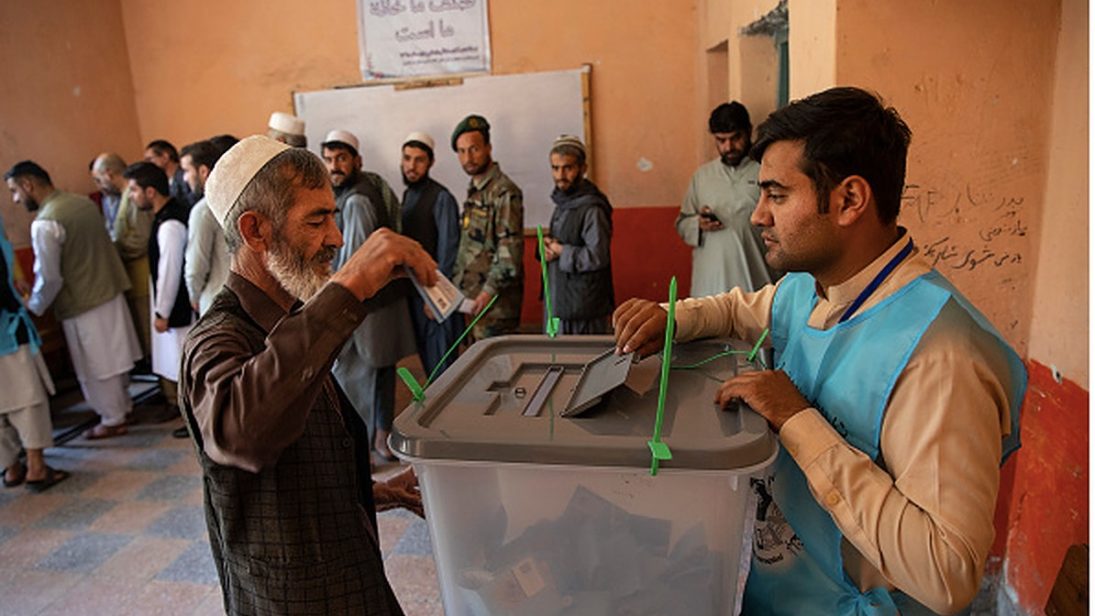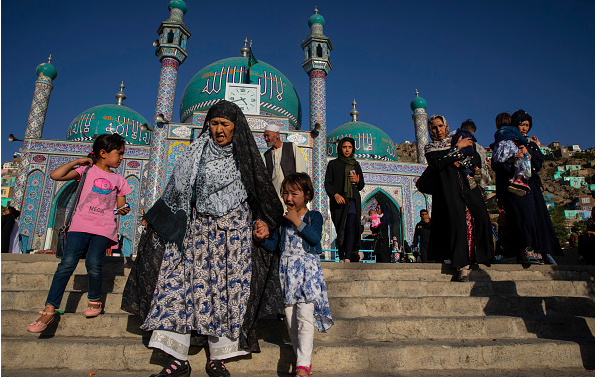
2019 was set to be a decisive year for Afghanistan, in which certain political developments had the potential to position the country either on the course of stability or on the brink of crisis. An accounting of key events in 2019 suggests rising political turmoil and a possible crisis of government legitimacy in the country, together indicating that Afghanistan is entering a highly uncertain 2020. A significant hurdle in Afghanistan’s road to democratization came in the form of the low turnout for the presidential election, the lowest since 2004 by most accounts— it was slightly more than one and a half million out of over nine and a half million registered voters in a country with approximately 35 million people. The election outcome was so contested that the final result is yet to be announced. The peace talks, which were earlier heralded as Afghan-led and Afghan-owned, do not feature the Afghan government anymore. Immense challenges in both these respects—a lack of consensus among the stakeholders party to the conflict as well as a weakened or absent Afghan government position in the negotiations—will likely frustrate Afghanistan’s path to peace in 2020.
2019 Presidential Elections: Shrouded in Doubt
Afghanistan is a fragile democracy, and elections have generally been a source of tension rather than a means of peaceful political transition. The presidential election in 2014 had pushed the country to the brink of a crisis, which was only avoided because of U.S. brokering, resulting in the National Unity Government (NUG). Similarly, the 2019 presidential election was ripe with fraud and will likely not result in an outright winner. Were a winner to be declared, he would have to form an “inclusive” government resembling the NUG—a power-sharing government brokered between the two contending 2014 presidential candidates—in order to preserve a degree of political stability.
A lack of consensus among the stakeholders party to the conflict as well as a weakened or absent Afghan government position in the negotiations will likely frustrate Afghanistan’s path to peace in 2020.
The 2019 election proceedings were also partially set off track by the peace talks that were happening simultaneously: an ensuing debate over which of the two represented a priority for Afghanistan challenged the foundations of Afghan democratization in the past year. Until September, the presidential election was dwarfed by the developing U.S.-led peace talks, which Washington referred to as being of the highest priority, and candidates were unsure about whether an election would even be held or not. In fact, Hanif Atmar, President Ashraf Ghani’s former national security adviser and one of the most competitive candidates in the race, withdrew his candidacy for the sake of peace talks, although some suggest it may have been due to power dynamics within his team.
After the Independent Election Commission (IEC) twice postponed the election, it was finally held on September 28, amid attacks by the Taliban and allegations of irregularity. What happened in the aftermath did not inspire any confidence in the minds of voters and only further muddled the process. Allegations of fraud continued to dog the elections, while both the top candidates claimed victory. The IEC encountered severe technical problems in validating the votes and after nearly three months, announced preliminary results on December 22 declaring Ghani the winner, but only by “a razor-thin margin of fewer than 12,000 votes.” The beginning of 2020 has brought no more clarity, with Ghani’s challenger Abdullah Abdullah contesting the results and the IEC investigating the complaints. A final result is expected by the end of the month.
This uncertainty has put the entire country in limbo, impacting its economic, governance, and security situation: investors dare not invest, high ranking government officials know little of their political futures, and the already dysfunctional bureaucracy cannot move forward.

The Utility and Futility of Peace Talks
The peace talks were arguably the most notable political development of the year for Afghanistan. Under the stewardship of Afghan-born U.S. Special Representative for Afghanistan Zalmay Khalizad, 2019 bore witness to some of the most intensive diplomatic efforts to reach a negotiated settlement as regards the Afghan conflict and the United States’ longest war. The peace talks between the Taliban and the United States revolved around four key issues: the withdrawal of foreign troops from Afghanistan, counterterrorism assurances in the aftermath of an agreement, encouraging intra-Afghan dialogue, and negotiating a comprehensive ceasefire. However, the Afghan government, the main stakeholder of the conflict and the only legitimate representative of the Afghan state, was absent from the negotiating table, bypassed by its strategic partner, the United States. For his part, President Ghani was unable to generate a domestic consensus on the peace process, further marginalizing the Afghan government in the process.
Many are skeptical about a peace agreement’s potential to actually bring about an end to the conflict in Afghanistan, noting that other terrorist groups, namely the Islamic State-Khorasan Province (ISKP), would continue to operate in the region.
Significant concerns remain even as negotiations re-opened in November after being stalled for about two months when U.S. President Donald Trump unexpectedly called the peace talks “dead” in September. For one, it will be difficult to bring the Afghan government back into the fold as it suffers from weakened legitimacy due to the fraudulent elections, and is not even recognized by the Taliban as party to the conflict. Secondly, many are skeptical about a peace agreement’s potential to actually bring about an end to the conflict in Afghanistan, noting that other terrorist groups, namely the Islamic State-Khorasan Province (ISKP), would continue to operate in the region. Similarly, Pakistan plays a critical role too as it has significant links with and leverage over the Taliban, and the United States would have to ensure that Islamabad plays its part in reigning in Taliban militants.
What Lies Ahead in 2020
With the final result of the presidential election yet to be declared and the direction of the peace talks uncertain, 2020 remains murky for Afghanistan. The United States has committed to withdrawing all of its troops from Afghanistan in case of a peace agreement, a policy that has prompted nine U.S. diplomats who worked on Afghanistan to express concerns about the potentially detrimental security situation that could arise from too hasty a withdrawal. Even if there is an agreement signed between the United States and the Taliban, serious questions remain about whether or not the Taliban political office could convince its rank-and-file on the ground to drop their weapons. Power-sharing between the Taliban and the Afghan government would also be a challenge.
The United States and the Afghan leaders would also have to take into consideration polling among Afghans that suggests that they support efforts to negotiate peace but insist that the peace agreement not come at the cost of progress made over the past 18 years, particularly as it relates to the constitution, efforts on women’s rights issues, and freedom of speech.
There is currently no clear roadmap for the country’s political future. However, what is clear is that Afghanistan requires strong leadership to play a unifying role in leading the peace process, one that refuses to allow an agreement to unfold without its direct involvement. The low turnout in the presidential election should provide a spark for the leaders to galvanize the Afghan people and put Afghanistan back on track for democratization.
Views expressed here are the author’s own and should not be attributed to Fulbright or any organization or institution with which he is affiliated.
Editor’s Note: SAV contributors from across the subcontinent recap the most significant political, economic, and strategic developments in South Asia in 2019 and analyze what opportunities and challenges lie ahead for each country in 2020. Read the full series here.
***
Image 1: Paula Bronstein via Getty Images
Image 2: Paula Bronstein via Getty Images


